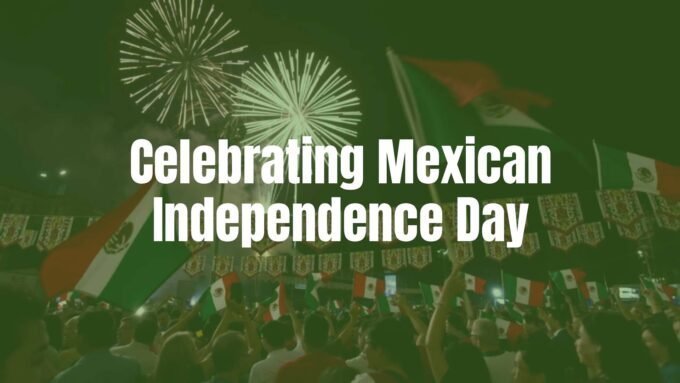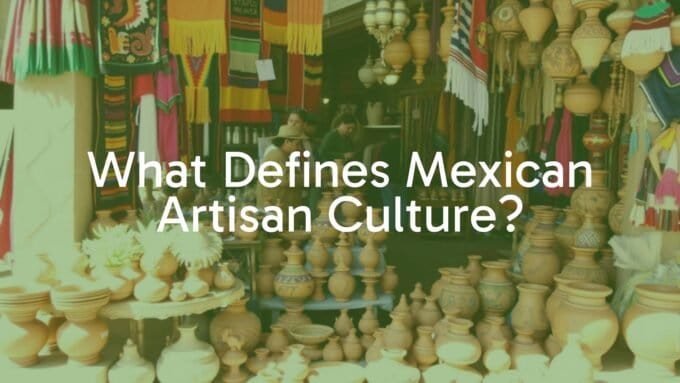Mexico is a country with a long, fascinating history and lively culture. Across its landscape, you’ll find many historical landmarks that help tell Mexico’s past. These sites are not just old structures or ruins-they are reminders of past cultures, colonial times, and how modern Mexico came to be. From the giant pyramids of ancient Mesoamerican civilizations to the colorful streets of old colonial towns, these landmarks offer a chance to see how many different people and ideas have shaped Mexico over thousands of years.
Mexico’s history goes back around 13,000 years, starting with ancient cultures. The arrival of Spanish conquerors in the 1500s changed the country in big ways, mixing Indigenous and European influences. Many of these historic places capture both the old and the new, and visitors from around the world come to learn more about Mexico’s rich story at these places.

What Makes a Place a Historical Landmark in Mexico?
Not every old site is a historical landmark. In Mexico, a landmark usually has special meaning for the country and its people. These places are important because they played a role in major events, have unique designs, or show the achievements of a certain group or time period. A good historical landmark tells a strong story and helps people connect with the past.
Some of these sites are ancient cities that once ruled regions; others are buildings from the colonial period where major events happened. At these landmarks, history comes alive-you can see it and feel it, not just read about it.
Criteria for Historical Importance
To be counted as a historical landmark in Mexico, a site generally should meet these standards:
- Connection to Major Historical Events: The site should be linked to significant periods or happenings, like ancient empires or independence struggles.
- Architectural or Artistic Value: The place often has unique construction, detailed artwork, or shows important building styles from history.
- Insight into Daily Life or Culture: Landmarks might show how people used to live, worship, or work, through preserved structures or objects found there.
- Rarity and Integrity: The site should be well preserved and stand out as one of the few of its kind.
Experts carefully look at these qualities before giving a site landmark status.
Monuments vs. Landmarks
People often use “monument” and “landmark” as if they meant the same thing, but they are a bit different, especially in Mexico. A monument is usually something built to remember a person, event, or idea. One famous example is the El Ángel de la Independencia in Mexico City, built to honor heroes of Mexican Independence.
A landmark is a broader term, including monuments, big buildings, ancient ruins, or even natural features like canyons. A landmark stands out because it is easy to recognize or has strong historical, cultural, or geographical importance. For instance, Chichen Itza is a landmark because of its history and recognizability, but it wasn’t made to celebrate a specific event or person like a monument is. Natural places like the Copper Canyon can also be landmarks if they have special features or importance.
| Type | Description | Example |
|---|---|---|
| Monument | Build to honor a person/event | El Ángel de la Independencia |
| Landmark | Recognizable place with cultural/historical/natural importance | Chichen Itza, Copper Canyon |

How Do Mexico’s Historical Landmarks Show the Country’s Past?
These sites are not just sightseeing spots-they help people understand Mexico’s long history and how the country has changed. Each ruin, church, or city square represents a piece of the larger story of Mexico. From the impressive ruins of ancient cities to the detailed colonial-era buildings and modern national sites, they all combine to show the country’s history from many angles.
These landmarks show the skills of ancient peoples, the changes that came with the Spanish, and the fights and accomplishments that built today’s nation. Seeing these places in person lets you follow along with these changes over thousands of years.
Pre-Columbian Civilizations and Their Sites
The first major civilizations in Mexico left behind incredible cities and structures. Groups like the Maya, Aztec, and Zapotec built large city centers, pyramids, and temples. Some of the most important sites from this era include:
- Chichen Itza: An ancient Mayan city with the famous El Castillo pyramid, which also shows advanced knowledge of astronomy and calendars.
- Teotihuacan: Known as the “City of the Gods,” this large city has huge pyramids and a carefully planned layout. It was built even before the Aztecs.
- Palenque: Surrounded by jungle, this Maya site is known for its detailed stone carvings and advanced aqueducts.
- Monte Albán: This Zapotec city sits on a hill and includes temples, pyramids, and open plazas.
These sites show the complex society, religion, and building skills of people long before Europeans arrived.

Colonial Sites and Spanish Influence
The Spanish arrived in the early 1500s and changed Mexico’s society, religion, and architecture. Many cities today still have their old colonial centers, filled with grand churches and new city layouts influenced by Spain. Some important colonial-era cities and sites are:
- Mexico City: Built on top of the Aztec city of Tenochtitlan. The cathedral and Templo Mayor show both old and new origins.
- Puebla: Famous for its Baroque architecture and colorful Talavera tiles, a mix of European and indigenous techniques.
- Guanajuato: Once a prosperous mining city, now known for its winding streets and historical buildings.
- San Miguel de Allende: Noted for its pretty streets, colonial-era churches, and unique blend of styles.
These areas highlight the meeting of European and Indigenous traditions, with a distinct style that can only be found in Mexico.

Modern Landmarks and National Symbols
In addition to ancient and colonial sites, Mexico has many important landmarks from more recent history. Many mark the country’s independence or growth in the modern age:
- Paseo de la Reforma in Mexico City: Features El Ángel de la Independencia, marking the fight for freedom.
- Monument to the Revolution: Reflects early 1900s struggles and change.
- Palacio de Bellas Artes: A major arts and culture venue with famous murals and blending of design styles.
- Luis Barragán House and Studio: Known for modern Mexican architecture using new ideas and local styles.
These sites show Mexico’s ongoing story and the many moments that shape its identity today.
Most Famous Historical Landmarks in Mexico
Mexico has many sites that are well-known worldwide for their size, state of preservation, or cultural importance. Here are some of the most famous:
| Landmark | Location | Civilization | Why Important? | UNESCO Site? |
|---|---|---|---|---|
| Chichen Itza | Yucatán Peninsula | Maya | Large city, El Castillo pyramid, shows Mayan science | Yes (1988) |
| Teotihuacan | Near Mexico City | Unknown (pre-Aztec) | Enormous pyramids and city plan | Yes (1987) |
| Monte Albán | Oaxaca | Zapotec | Hilltop complex, Zapotec political center | Yes (1987) |
| Palenque | Chiapas | Maya | Artistic stonework, preserved ruins | Yes (1987) |
| Templo Mayor | Mexico City | Aztec | Main temple of Aztec capital | No (part of Mexico City’s center) |
Other Notable Sites
- Uxmal and the Puuc Route (Yucatán): Unique Puuc architecture and detailed stonework.
- Mitla (Oaxaca): Known for geometric “grecas” designs, used as burial and ceremonial site.
- Tulum (Quintana Roo): Walled Mayan city atop cliffs by the sea, last major Mayan stronghold.

Historic Cities with Landmark Sites
Several Mexican cities are themselves historical treasures. Their streets and buildings are living pieces of history, making them great places to explore on foot.
- Mexico City: Home to the Zócalo (main square), Palacio de Bellas Artes, Chapultepec Castle, and Templo Mayor ruins.
Tip: The Zócalo area and main museums are accessible and well served by city transport. - Guanajuato: Known for its winding alleys, underground tunnels, and historical sites like Teatro Juárez and silver mines.
- San Miguel de Allende: Recognized by UNESCO for its well-kept Baroque churches and vibrant art community.
- Puebla: Famous for its Talavera tiles and cathedral, with many well-preserved colonial buildings downtown.
- Oaxaca: Historic center, Santo Domingo Temple, local markets, and the nearby Zapotec ruins of Monte Albán.
- Campeche: Notable for its city walls, bright houses, and colonial forts, important as a historic port town.
- Morelia: Known for its pink-stone cathedral and long aqueduct, reflecting Spanish Renaissance planning.
Why Are Mexico’s Historical Landmarks Important for Culture and Tourism?
These sites play a big part in shaping Mexico’s identity and helping people feel proud of their history. They attract millions of tourists each year and provide income and jobs for many Mexicans. The landmarks also help people learn about the country’s past and help keep local customs and traditions alive.
Landmarks as National Symbols
Places like Chichen Itza or El Ángel de la Independencia are seen as symbols of Mexican culture. Visiting them helps Mexicans connect with their ancestors, while foreign visitors get to see important parts of Mexico’s story up close. These sites also often appear in art, books, and stories. For locals, visiting can feel like a journey back in time.
Economic Impact
Tourists spend money at these sites (ticket sales, guided tours, hotels, restaurants, souvenirs), which supports local people and the country’s economy. Sites like Chichen Itza and Teotihuacan each draw hundreds of thousands or even millions of visitors each year. Often, whole towns depend on visitors coming to see local landmarks.
UNESCO World Heritage Sites in Mexico
Mexico is high on UNESCO’s World Heritage list, with 36 properties (28 cultural, 6 natural, 2 mixed) as of September 2025. Having UNESCO status brings attention to these places, helps get support for repairs and upkeep, and encourages worldwide respect and help for these sites. UNESCO’s recognition also means sites are better protected and preserved for future generations.
Tips for Visiting Mexico’s Landmarks Responsibly
Visiting these places comes with a responsibility to keep them safe for the future. Travelers should treat these sites with care, follow all rules, and support the people and environment around them. Making good choices helps protect Mexico’s heritage.
When to Visit
- The cooler, drier season from November to April is best for comfortable weather and clear views, especially for places with little shade like Chichen Itza or Teotihuacan.
- This is also the busy season, so if you want fewer crowds, try May, June, September, or October, even if there’s a bit more rain or heat. These times can make visits quieter and more enjoyable.
- Check the specific weather for the area before you go-Mexico’s different regions can vary a lot.
Responsible and Supportive Tourism
- Stay on marked trails, don’t climb or touch delicate areas, and throw away trash properly.
- Don’t take anything from the site (not even a small rock or piece of pottery).
- Choose local guides and buy from small local shops so your money helps the community.
- Watch your water and energy use, especially at sites in fragile environments.

Safety Tips
- Be aware of your surroundings in busy or unfamiliar places.
- Keep valuables hidden and don’t carry too much cash.
- Visit big sites during the daytime and use trusted transport.
- Bring sun protection, comfortable shoes, and plenty of water, especially for outdoor sites.
- Some places have uneven surfaces or require lots of walking, so pace yourself and know your own limits.
- Consider travel insurance for emergencies.
Frequently Asked Questions about Visiting Mexico’s Landmarks
Do You Need Tickets?
Yes, most major historical sites charge a fee for entry. The Instituto Nacional de Antropología e Historia (INAH) manages many of these places. Money from ticket sales helps keep the sites in good condition. Prices vary, and some sites have extra fees for video cameras or special areas. Check the site’s official website or guides for up-to-date info. Sometimes entry is free for Mexican citizens on Sundays, but usually not for international tourists. For big sites, buying tickets in advance or arriving early helps you avoid lines.
Which Landmarks Are Most Accessible?
Some sites are easier to visit if you have mobility needs. City landmarks in Mexico City, Oaxaca, Puebla, and San Miguel de Allende often have paved sidewalks and plaza areas, and bigger museums may have ramps and elevators. Ancient ruins (like at Teotihuacan) are often not as accessible, with dirt paths, steps, and uneven ground. Before you go, check what facilities are on offer, and think about booking tours designed for specific needs.
Can Children and People with Limited Mobility Visit?
Yes, but planning is important. Visiting can be exciting for kids, but these places sometimes cover large areas and get hot. Bring water, snacks, and plan for breaks. For visitors with limited mobility, city sites are usually more manageable; many ancient ruins can be tough with lots of stairs or rocky ground. Some, like parts of Teotihuacan, are mostly flat, but climbing is not possible with a wheelchair or for those who can’t manage stairs. Contact the site in advance or look for guided tours with accessible paths. With a little planning, everyone can enjoy these wonderful pieces of history.













Leave a comment